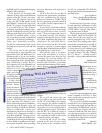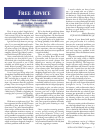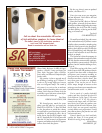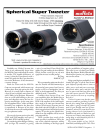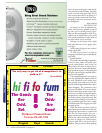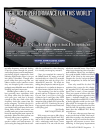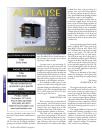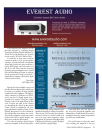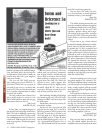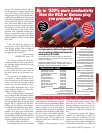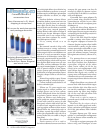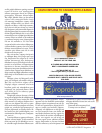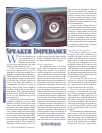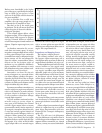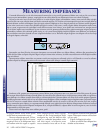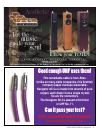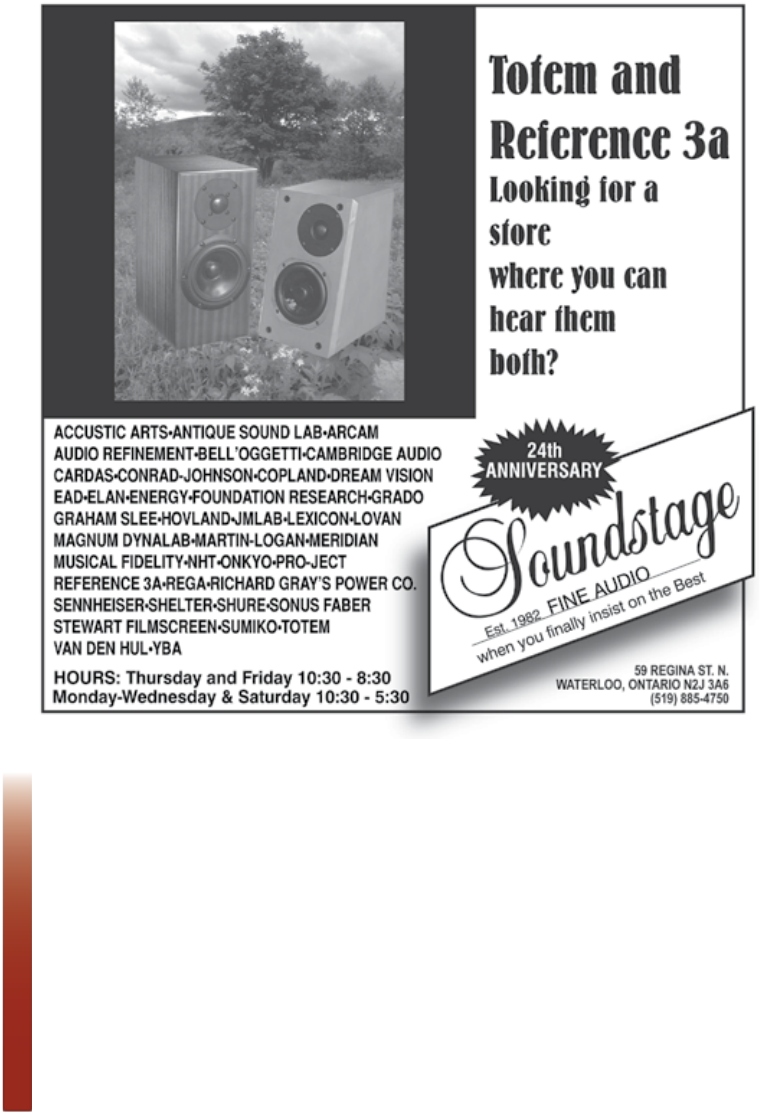
Feedback
Free Advice
familiar with many of the audiophile maga-
zines, and I think yours is the most objective
and informative of all of them. It makes me
proud to know that such a great magazine
comes from Canada.
Now on to the CEC DA53 converter.
After reading your review in UHF No. 72,
I purchased a DA53 and it is very good. As
you noted in your review, it certainly adds
punch to CDs. Like you, I was most interested
in its versatility and particularly its ability
to be used with an iPod.
The only problem is that I haven’t been
able to figure out how to connect it to the
iPod. I would still like to know how you guys
connected an iPod to the DA 53.
John Lorito
OAKVILLE, ON
In fact, John, we jumped the gun on
the question of connecting the iPod to a
DAC. We had no difficulty connecting
our computer to the DA53, and we made
the assumption that, since the iPod can
connect to a USB network, the two were
made to go together. That doesn’t appear
to be true.
But we haven’t given up. We have
talked with two accessory companies
(one of them Griffin, which brings out
clever iPod accessories almost daily)
about making an adapter to get pure
digital from the iPod. We know the
signal’s in there, and it appears that
there’s at least one device, Apple’s penny
dreadful “iPod Hi-Fi,” that can get
access to it. We hope to crack the secret,
and we’ll let you know how we do.
If the Cambridge DiscMagic/DACMagic
are a matching pair, why is the DAC input
limited to coax BNC, when the transport has
an XLR output?
Furthermore: this may be relevant (it’s
from Audio Asylum):
Join the two “hot” wires from the AES
plug side into the single “hot” on the RCA
side. Keep ground on AES to ground on the
RCA side. It works but is not ideal, as an
AES cable needs to be 110 ohm impedance
and an SPDIF (coax) is 75 ohms. Be aware
that the SPDIF digital signal is a +0.5 v to
-0.5 v signal and an AES signal is +5.0 v to
-5.0 v, but this should not be an issue, because
most DACs wont bother about this..
Does the above DIY make any sense,
or is the transformer to match impedance
absolutely necessary, if not advisable?
James Tay
TORONTO, ON
The Audio Asylum instructions you
quote for matching a balanced output to
an unbalanced input won’t work, James,
and it’s obvious on the face of it. Mix
together a positive voltage and a nega-
tive voltage of the same value, and what
do you get? Zilch. Whoever posted this
hasn’t tried it, or else loves the sound of
silence.
If you want to try a more rational
method for adapting balanced to unbal-
anced, these are the pin readouts: pin 1
is ground, pin 2 is “hot” or positive and
pin 3 is negative (it’s the inverted version
of the signal on pin 2). However there is
absolutely no point in using the balanced
input or output on one component unless
the other component is also balanced.
We should also add that a lot of “bal-
anced” components are not balanced at
all, because the goofs who designed them
don’t understand what balancing is or
what it’s for. And if “balancing” has been
accomplished by adding an extra circuit,
perhaps an op amp chip, you can guess
what the result will be.
I have been reading your reviews on two
integrated amplifiers, the Copland CTA-
405 and the Audiomat Opéra, and they both
seem like they offer a lot of refinement for the
money. Could you please guide me towards
the best sounding of the two regardless of their
price difference?
I also noted that in both your reviews on
these amplifiers there was a moment where
they seemed to sound more enjoyable than
the reference system, and on that particular
note it seems that the Copland definitely had
the edge over the Opéra at sounding better
than the reference system. Is it possible that
the Copland 405 is better than the Opéra?
Please help me buy either of these as to the
best sounding amplifier of the two.
Laurent Shriqui
MONTRÉAL, QC
You aren’t the first to ask this, Lau-
rent. We should explain that the two
amplifiers were not reviewed on the same
14 ULTRA HIGH FIDELITY Magazine



